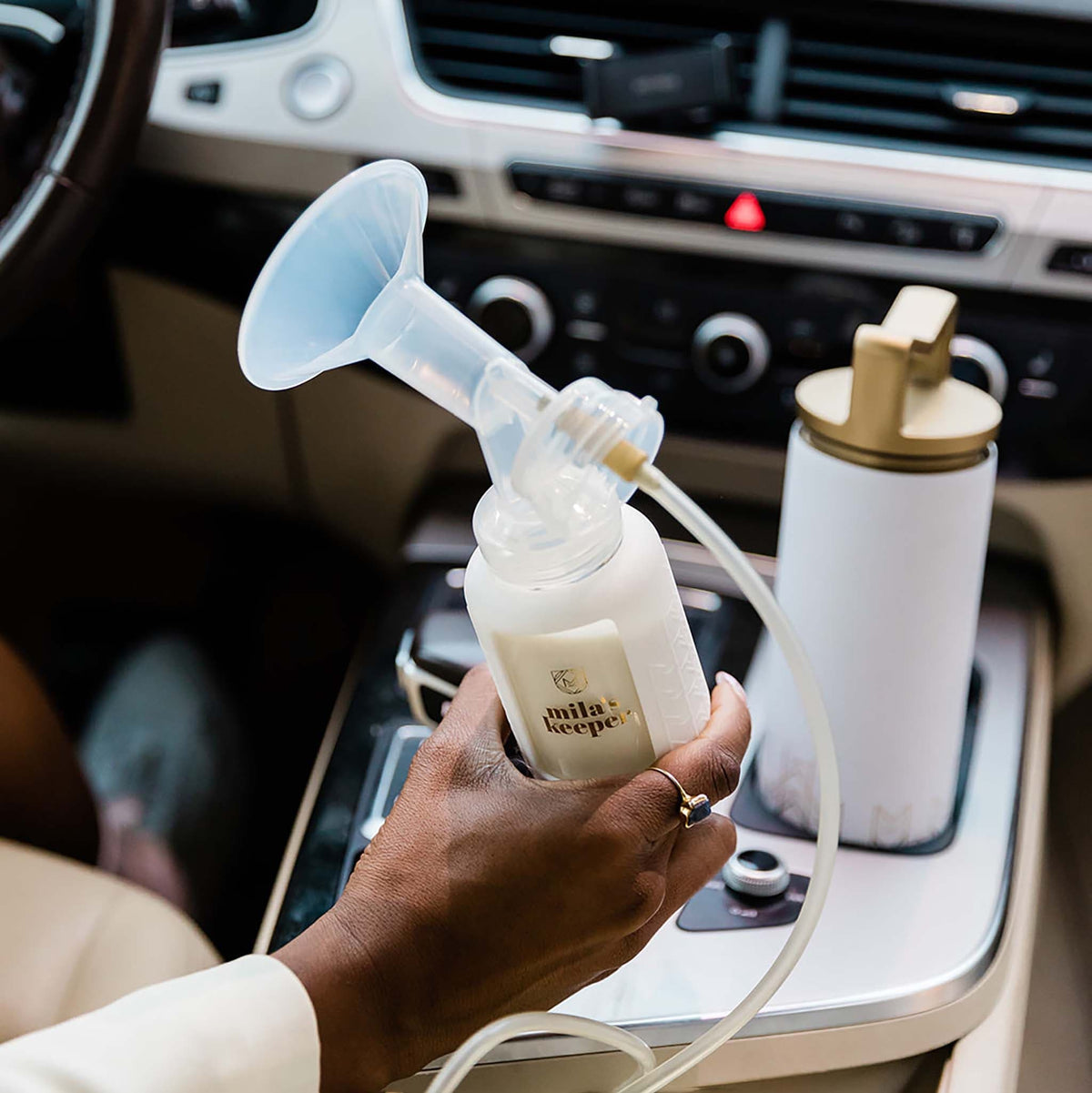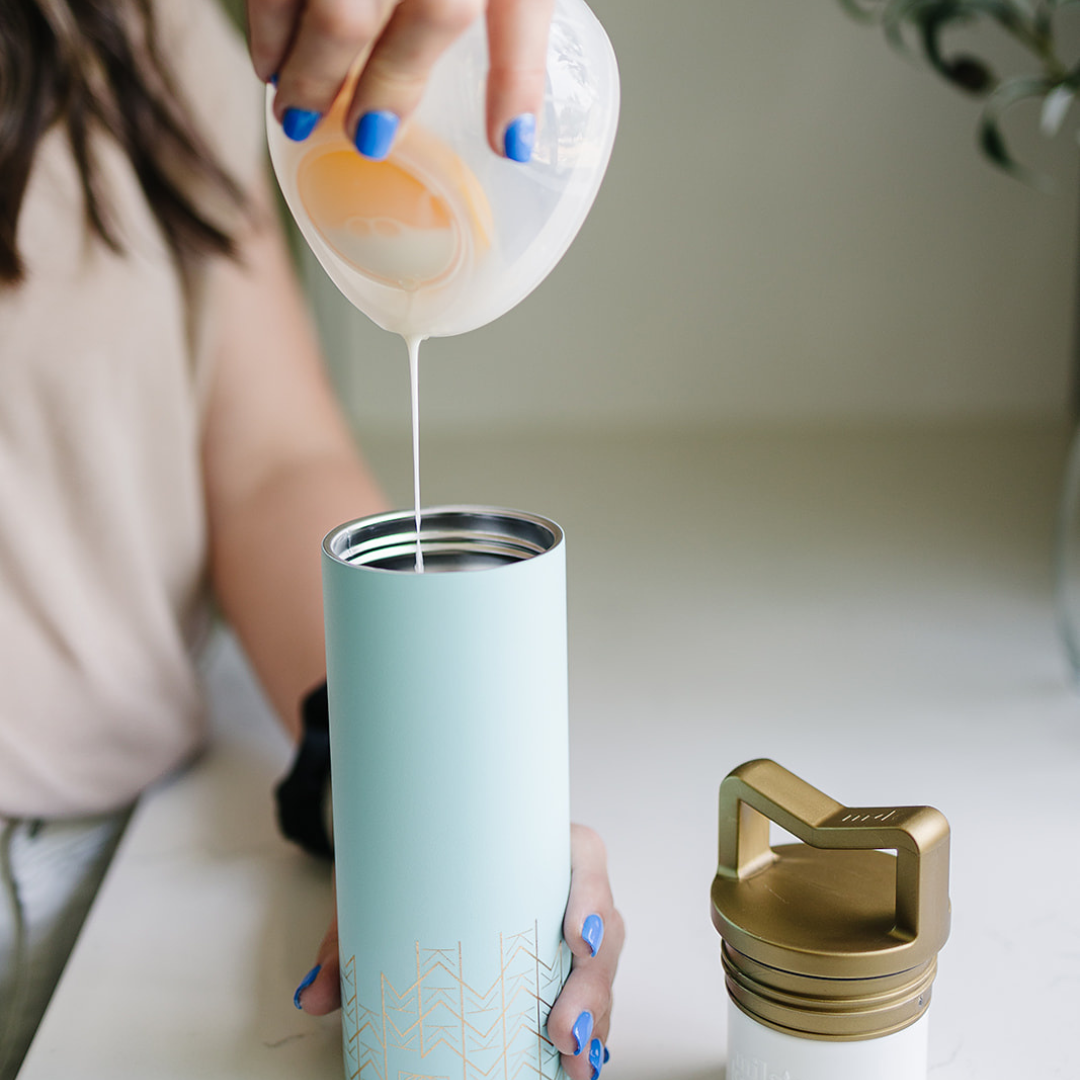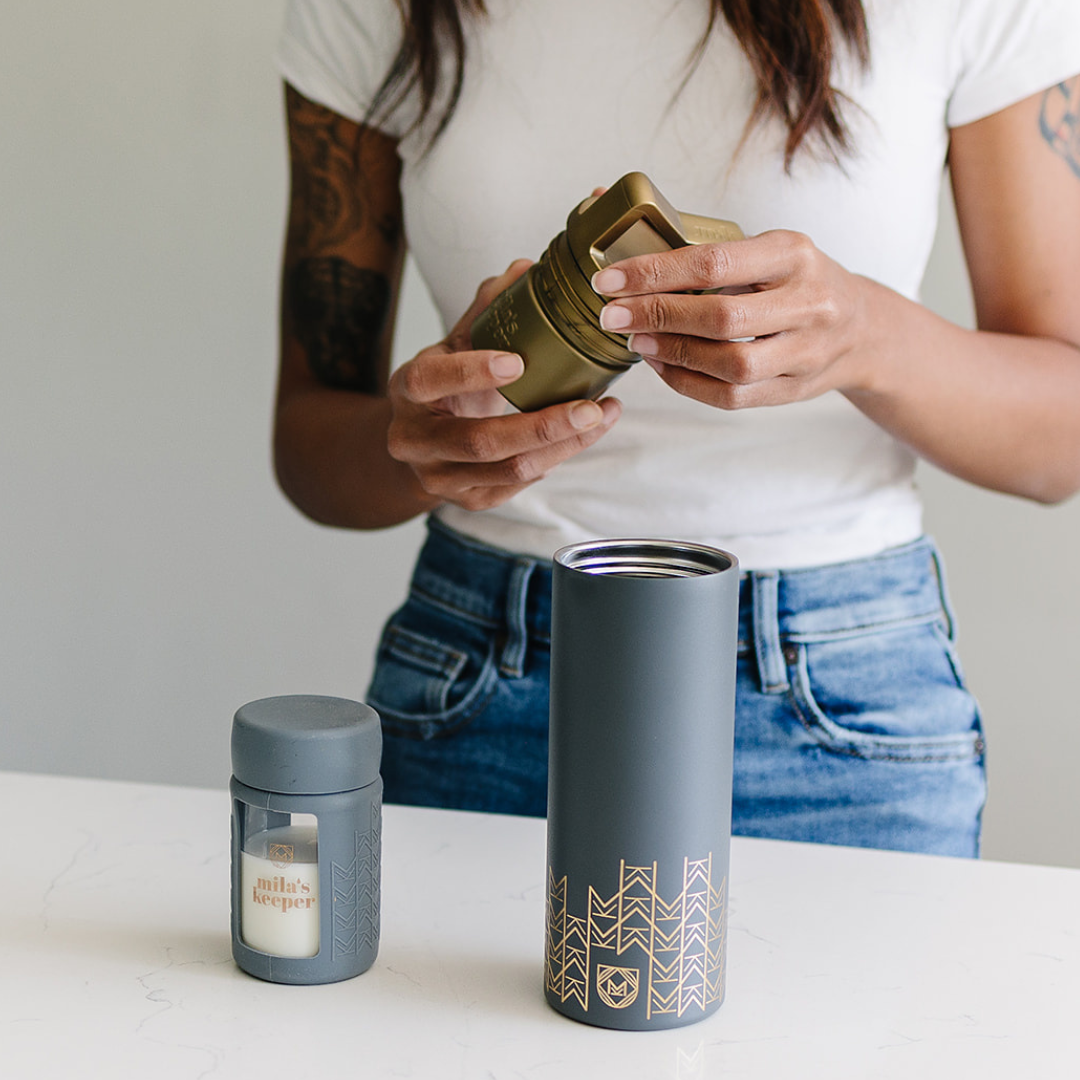Humans' ability to produce milk is one of the many natural wonders of life. But if you're confused as to how milk is made, don't worry.
We've got you covered with all the answers below. You got this, Mama!
See Related: August Is National Breastfeeding Awareness Month
#1. The parts involved in milk production
There are many different moving parts when it comes to how breastfeeding works. And that's not even getting into how to store milk in proper containers. But hopefully, you'll find our simplified guide below easy to understand.
Mammary glands
Breast milk is produced in the glandular tissue of the breasts, AKA in your mammary glands. This smooth muscle tissue wraps around these tiny milk-producing cells that contract during a hormonal response.

(We'll touch on these other hormones later. Because there are quite a few triggers you have to look forward to!)
Milk ducts
Once the milk is made in the mammary glands, it then travels down to the milk ducts. These act as little tubes connecting the glands to the nipple.
But before you release milk from the nipple, the milk hangs out in the milk sinuses. These are little pockets behind the nipple that are an important part of developing a healthy latch.
The nipple
Lastly, your breast milk will release through your nipples. You might think that the size of your breasts has to do with how much milk you can produce.
But size really doesn't matter in this case! The size of your breast is determined by how much fat is in them and, as we've gone over, the glands that produce breast milk are separate.
#2. How milk production begins from pregnancy to after baby is born
Did you know that you actually start producing milk during pregnancy? That's right! This is why you might feel a little more tender in your chest.

During pregnancy, your mammary glands will start to produce colostrum, AKA the first milk that baby drinks. Colostrum is thicker than your standard milk and has a more yellowish tint to it.
This colostrum contains more nutrients and immunity boosting properties for baby than mature breast milk. And the hormone progesterone in the placenta makes sure that that first milk is saved for when baby gets here.
After the placenta is gone, the hormone prolactin tells your glands to get to work, sending down baby's first meal as your progesterone levels drop. Colostrum will continue to flow for about three to five days, then will turn into regular milk.
These natural processes happen whether baby nurses or not. It's really all about hormones!
#3. Milk supply and demand
You might be wondering, "So, how is it that I continue to produce more milk?" Well, more milk gets produced with milk removal, AKA when baby suckles.

When baby feeds, triggers nipple stimulation, or even when you hear baby cry, different messages are sent to your brain and breasts. In your brain, oxytocin releases, sending a message to your breasts to release the breast milk.
Then, once baby has had enough milk or drains the breast, the brain receives a message from the nipple to produce more milk. That's why frequent breastfeeding is recommended for those who want to keep their supply up and why investing in a breastmilk cooler is so important!
As you can see, it's a whole process of removing milk and replenishing milk for baby. So the supply and demand metaphor really is spot on.
#4. Protecting your liquid gold
If you're the working Mama, then you'll likely have your breast pump with you at all times. And you'll need something to keep that breast milk safe, clean, and cold, right?

How Mila's Keeper can help
That's where we come in. At Mila's Keeper, we're passionate about empowering Mamas to safely store their breast milk anywhere with our glass breast milk storage options.
Whether they're leading a company meeting and don't want to store their breast milk in the fridge. Or whether they're on a hike and have a chance to pump for baby.
No matter where you are, our glass bottles and coolers are the perfect way to make sure your breast milk stays safe, clean, and cold for baby. So you don't have to sacrifice your active lifestyle.
Wrapping up
Understanding the in's and out's of breastfeeding can feel overwhelming. But you got this!
There's a lot to learn as you go through the different stages of parenthood. But you can always count on us at Mila's Keeper to offer you the tools, resources, and products to confidently embark on your journey into parenthood.
Keep Reading: It's Official, We Have Launched On World Breastfeeding Week
--
A female-designed and female-run company, Mila's Keeper is on a mission to empower women to thrive during their breastfeeding journey by offering reusable, eco-friendly breast milk storage solutions for their day-to-day needs. Get the latest tips and info on Mila's Keeper products by following us on Facebook, Twitter, Instagram, Pinterest, and LinkedIn.























